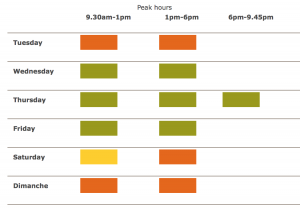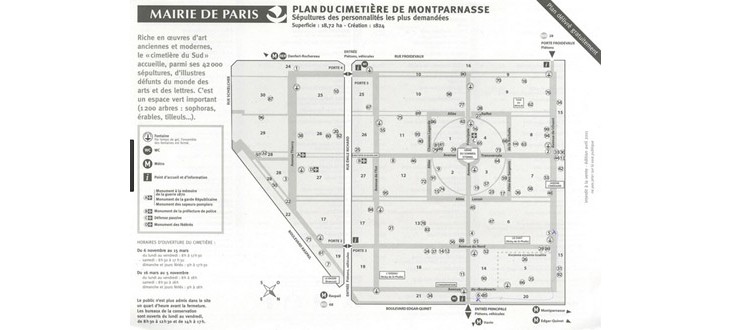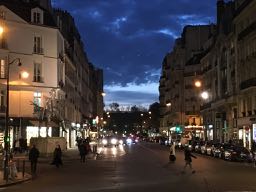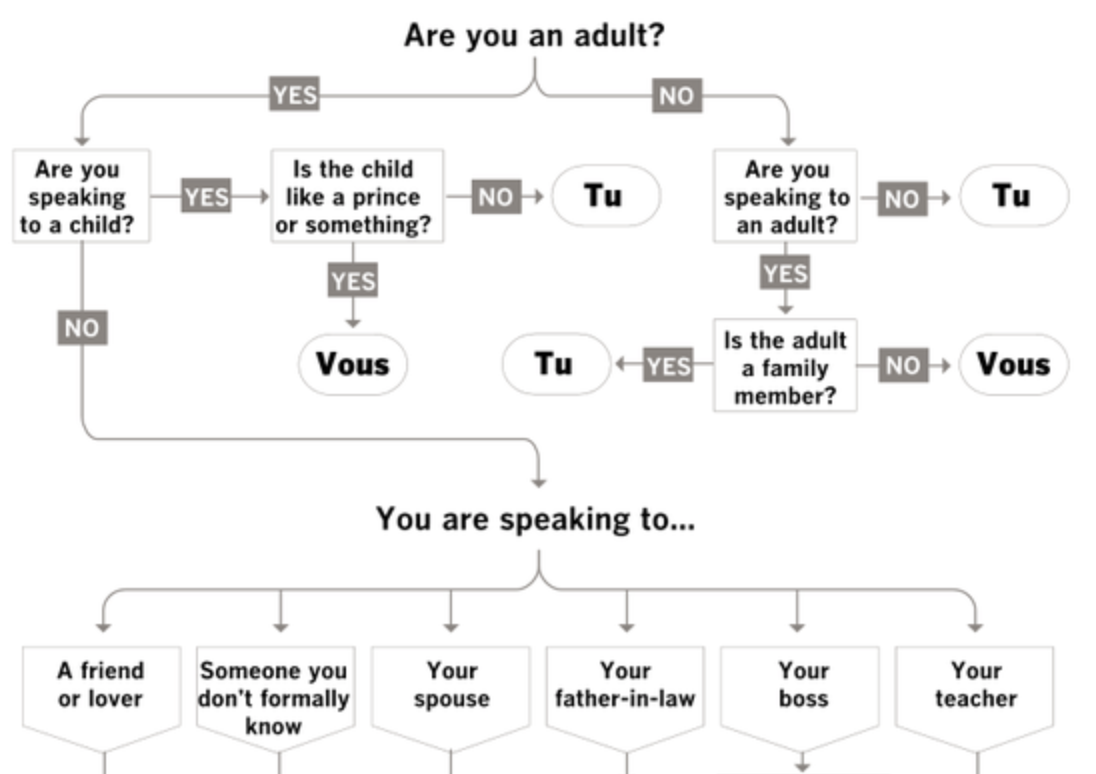An American mother in Paris/In search of the City of Light’s PG-rated attractions. By Janis Cooke Newman in SF Chronicle
(05-13) 04:00 PDT Paris — My date at the restaurant in the Eiffel Tower
is making a crayfish dance on the edge of his platter of seafood. He
wiggles a little pair of orange claws at me. I smile and tenderly touch
his cheek. Then we gaze out past the filigree struts of the tower to the
lights of Paris glittering in the night sky.
“Always see Paris with someone you love.” The first man who took me to
Paris gave me this advice. I was in my 20s, and was certainly in love with
him.
We stayed in a little hotel above a 24-hour Vietnamese takeout restaurant
and spent hours strolling beside the Seine. Each time we passed beneath a
bridge I kissed him.
Now, nearly 20 years later, I’m sitting in Altitude 95, the restaurant
halfway up the Eiffel Tower, watching someone I love make a crayfish
dance. Someone who earlier this evening dropped a crayon into my white
wine: my 5- year-old son, Alex.
The other person I love – my husband – is also here, sitting across from
us and pointing his Leica at a middle-aged French couple sucking oysters.
Something happens to my generally romantic husband when he comes to Paris.
The moment he steps off the plane at Charles De Gaulle, he becomes another
person –
specifically, Henri Cartier Bresson, the French photographer who redefined
black-and-white photography. The result is that for our entire stay in the
City of Light, I never see him without a camera stuck to his face.
So on this trip, I’m counting on Alex to provide the proper emotional
backdrop for Paris, even if he is given to animating portions of his
dinner.
There is of course, an element of risk to this plan. Paris is not
generally thought of as a child-friendly destination. Which is not
surprising, since so many Parisian pursuits involve substantial amounts of
cigarette smoking, wine drinking and impassioned groping in darkened
cafes. But I have decided to trust Cadogan Guide’s “Take the Kids: Paris,”
which lists the best place to buy TinTin comics (L’Oiseau de Paradis); a
museum that contains a pickled, one- eyed cat (Musee National d’Histoire
Naturelle) and a Parisian park that features a petting zoo, a steam train,
an archery range and a bowling alley (Jardin d’Acclimatation). All of
which promises parents a new, PG-rated look at Paris – and life beyond
EuroDisney.
Inside Altitude 95, it’s all brushed metal and steel girders, silver beams
that slant across the ceiling. Outside Altitude 95 is all of Paris. The
three of us work our way through an enormous platter of oysters and clams
and steamed sea snails, stopping only to lick our fingers and admire the
view.
After dinner we walk around the tower, pointing out Parisian landmarks to
each other. From up here, the barges that chug up and down the Seine look
like boats in a bathtub, the lighted Palais de Chaillot like a dollhouse
for rich kids.
“The ice cream place is still open!” shouts Alex, looking down at a tiny
lighted building near the gardens of the Champ de Mars. He makes a run for
the elevator.
Alex and I walk back to our hotel through the narrow streets of the 7th
arrondissement, holding hands and eating ice cream. My husband wanders
along behind us, taking pictures of French people smoking in cafes.
Spinning, rolling and riding
The next day we visit the Jardin des Tuileries, the formal gardens between
the Place de la Concorde and the Louvre. In summer these gardens are
filled with carnival rides – spinning tea cups and dragon rollercoasters –
that make the place feel like Versailles-meets-Coney Island.
Alex runs to an old carousel and climbs onto a painted horse named Yent’l.
The carousel has no music and, as it spins, it creaks like the hull of an
ancient wooden ship. Each time Alex whirls past me we wave at each other
like long lost friends.
“Let’s go on the Ferris wheel!” Alex says, dragging me into an open car.
I’m so captivated by his excited face I forget until we are 250 feet above
the ground that I’m terrified of heights. Our car stops at the top, where
we can see the white domes of Sacre Coeur, the golden cupola of Les
Invalides, and the ground, very, very far below us. My husband, who is
down there photographing a group of screaming children on the
Tilt-a-Whirl, looks like an ant with a camera.
“Mom,” says Alex, “you’re squeezing my hand.”
When at last we get back on the ground, the three of us walk along the
garden’s gravel paths toward the glass pyramid of the Louvre. The Louvre
is so overwhelming, the only strategy for seeing it with a child is to
pick just one thing and then try to find it. Alex and I walk through the
museum’s echoey marble halls, taking turns asking the guards for “Les
mommies,” (the mummies), which are our favorite things.
It takes a half hour before we find them – mummified cats and dogs and
even a fish. Alex is fascinated by the mummified crocodile. I like the
mummy of a man, wrapped with his hands crossed on his chest, the perfect
personification of a dead person. It takes another half hour to find our
way to the exit.
Afterward, we walk along the Seine, passing little stands that sell
postcards and prints of famous paintings in the Louvre. My husband takes
several photographs of tourists in the decisive moment of buying miniature
copies of the Mona Lisa.
Parisian park pool
The following morning, we head over to the Latin Quarter and the Jardin du
Luxembourg. This Parisian park, with its neat rows of flowers and palm
trees planted in green tubs, reminds me so much of Celesteville, the town
the elephants built in Alex’s “Babar the King” book, that I half expect to
see the green-suited elephant relaxing on one of the wooden benches. Near
a big hexagonal pool, my husband rents Alex a long bamboo pole from a man
who is actually wearing a beret.
“Cent!” shouts the man in the beret. And the three of us run to the pool,
searching for the little wooden sailboat with the number 100 painted onto
its sail.
Alex uses the pole to push his boat across the water, chasing it from side
to side. After a while, a small boy shows up with a powered,
remote-control Miami Vice yacht. The little motorized boat buzzes around
the fountain, skimming the surface of the water and scaring the pigeons.
Alex and the other children watch, their bamboo poles drooping on the
ground, their forgotten sailboats crashing into the little duck house in
the center of the pool.
Later, we walk to the Theatre du Luxembourg, where every day in summer
puppet shows are performed. Today’s performance is called “Voyage to the
North Pole” and features several polar bears and a penguin with a nose
that resembles a large salami. The main thrust of the story appears to
focus on the theft of the captain’s private stash of sausages and
Camembert cheese.
The next day Alex wants to see Napoleon’s tomb, so my husband and I take
him to the shrine at Les Invalides. In the center of a great marble hall,
Napoleon’s body rests inside a blood-red sarcophagus big enough to hold
several defensive linebackers. Within the sarcophagus are six more coffins
made of mahogany, tin and lead. Surrounding Napoleon’s well-protected
remains are several 15-foot-tall carved angels, which Alex keeps referring
to as “fairies.”
“Was Napoleon famous?” he asks me.
Midway through telling him the story of the power-mad emperor, I discover
just how little I know about French history.
“So Napoleon wanted to be boss of the world?” asks Alex when I can’t
remember precisely which countries Napoleon invaded.
“Exactly.”
The sprawling building next to Napoleon’s tomb houses the Museum of the
Army – nirvana for a 5-year-old boy. Alex climbs on all the cannons in the
courtyard, and then we go inside to view more rooms of medieval armor than
any grown-up should be required to endure. Alex is intrigued by a
scalloped-edge sword designed to inflict wounds that won’t heal. My
husband photographs two Italian ladies trying to peek under a knight’s
armor-plated codpiece.
“Peter Max does The Flintstones’
Later that afternoon we take Alex to the Pompidou Centre, Paris’ modern
art museum in the inside-out building. In the courtyard in front of the
museum we follow the fat, blue-and-white ventilation pipes that snake
across the outside walls. Behind us, in the center of a fountain, water
gushes from a mermaid’s breasts. We take an escalator enclosed in a clear
tube to the fourth level, where the museum keeps its most current
collections.
“Look what this artist invented.” Alex points to an installation that
consists of several pink buttocks poking through flowered wallpaper. We
examine a sculpture of a naked woman made from old baby dolls. There are
curlers in her black-yarn pubic hair.
“Did somebody make this all by himself?” Alex asks.
“Art is a solitary pursuit,” my husband tells him. Then the two of them
disappear into a modernist cave done in graphic black and white.
“It’s a little like “Peter Max does the Flintstones,’ ” says my husband,
poking his head out.
Later, beneath a Mondrian, Alex gets out his magic markers and sketches in
a little pad. There’s so much untapped artistic potential in his drawing
of Spiderman that I am tempted to take it directly to the curator.
The following day we walk over to the Ile de la Cite, the small island in
the middle of the Seine that is the home of Notre Dame. Our plan is to
climb the 238 steps to the top and see the rooftop gargoyles face to face.
Because only 50 people are allowed to go up Notre Dame at any one time,
there’s a long line outside the cathedral. Leaving my husband in the line,
where he can occupy himself photographing the tourists buying plastic
figures of the Disney version of Quasimodo, Alex and I go exploring in
Notre Dame’s chapel. Inside, the walls are covered with paintings
depicting the lives of Joan of Arc and Jesus – both of whom appear to have
come to some pretty gruesome ends.
“If Jesus was such a good guy,” Alex asks, “why did they kill him?”
I am no better at explaining this than I was at explaining the life of
Napoleon.
Worn smooth by time
After an hour or so, we get to the front of the line and it’s our turn to
climb Notre Dame. The 238 stone steps are curved and worn smooth by time.
When Victor Hugo wrote “The Hunchback of Notre Dame,” the cathedral was
already 700 years old.
We reach the top and step outside, looking over the rooftops of Paris in
the company of stone creatures with curling horns and bulging eyes. They
resemble less-affable versions of the monsters in “Where the Wild Things
Are.”
According to my guidebook, the creatures whose incisor-filled mouths are
used to drain rainwater are gargoyles, and the purely decorative creatures
who sit on the building’s spires and stare at the city are chimera.
“Oh my God,” whispers my husband. “It’s the Stryga.” He stands reverently
beside a chimera with a face that resembles a cross between a goat and an
unattractive dog. I recognize the creature from a famous photograph by
Bresson.
Standing there, my husband’s face reminds me of Alex’s the day we rode up
the Macy’s elevator with one of Santa’s elves. I kiss the part of my
husband’s cheek that doesn’t have a camera pressed against it, and take
Alex off to see the saints and apostles perched on the cathedral’s spires
– holy men who gaze upward, as if considering whether to ascend into
heaven.
When we return, my husband hasn’t budged from the Stryga. So, leaving him
with old goatface, Alex and I head off to the bell tower to look for “that
hunchback guy.”
On our last night in Paris, Alex wants to ride on a Bateaux Mouches, one
of the sightseeing boats that travel up and down the Seine from the Pont
de L’Alma. It’s a hot night, and all along the stone embankments Parisians
sit on blankets drinking white wine and eating baguette sandwiches wrapped
in brown paper. A salsa band has set up on the banks of the Ile St. Louis,
and couples dance at the water’s edge, the women twirling their skirts to
cool off their legs.
On the boat, Alex and I run from side to side so we don’t miss any of the
sights the recorded voice is pointing out in four languages: the Musee
d’Orsay,
the Obelisque, the Conciergerie – the prison where Marie Antoinette waited
to have her head chopped off. My husband leans out over the bow to
photograph the houseboats that line the Left Bank, old wooden barges that
have been outfitted with pots of geraniums and American patio furniture.
As we float down the Seine in the warm summer air, I lift Alex up so he
won’t miss anything. And each time we pass beneath a bridge, I kiss him.
IF YOU GO
— WHERE TO STAY: Paris is filled with inexpensive, small hotels. The
trick when traveling with kids is finding one with a room big enough to
squeeze a rollaway into. The Hotel Saint Dominique (62 rue
Saint-Dominique; phone: 011- 33-1-47-05-51-44; fax: 01-47-05-81-28;
e-mail: hotel.saint.dominique@wanadoo. fr), has a few rooms that will work
for families. Rates for double rooms with rollaways are 850 francs ($116)
a night, and include breakfast. Best bet is to ask for one of the rooms
that face the courtyard; they’re much quieter. The Hotel Le Pavillon
(nearby at 54 rue Saint-Dominique; phone: 011-33-1-45-51-42- 87; fax:
011-33-1-45-51-32-79; e-mail patrickpavillon@aol.com) also has a couple of
rooms big enough to accommodate families. Rates are 575 francs ($79) per
night. The Hotel Le Pavillon has no elevator, so be prepared to lug your
suitcases up a few flights. Both of these hotels are within easy walking
distance of the Eiffel Tower, Les Invalides and the Bateaux Mouches.
WHAT TO SEE: The Eiffel Tower is open daily from 9 a.m. to midnight June
to August; from 9 a.m. until 11 p.m. September-May. Tickets for the
elevator to the top are 59 francs ($8) for adults, 30 francs ($4) for
children under 12. There is nearly always a long line for the elevator.
One way to beat this is to make reservations for Altitude 95, the
restaurant on the first level of the tower. Then you can use the private
elevator, and won’t have to stand in any lines. Altitude 95 has a fixed
price menu ranging from 98 francs ($13.50) to 250 francs ($34). There’s
also a children’s menu at 46 francs ($6.30). Call for reservations
(011-33-1-45-55-20-04; Web: www.tour-eiffel.fr) at least a day in advance.
The Louvre (011-33-1-40-20-51-51; Web: www.louvre.fr) is open 9 a.m. to 6
p.m. (Wednesday until 9:45 p.m.) everyday except Tuesday. Adult admission
is 45 francs ($6.15); children are free. There’s a reduced adult admission
of 26 francs ($3.50) after 3 p.m. and all day Sunday. Everyone gets in
free on the first Sunday of every month. To find out when the puppets are
performing in the Theatre du Luxembourg, call 011-33-1-46-63-08-09. The
cost is 24 francs ($3.29), and the shows run about 45 minutes. Les
Invalides and the Museum of the Army (011-33-1-44-42-37-72) are open daily
in summer from 10 a.m. until 5:45 p.m., in winter from 10 a.m. until 4:45
p.m. Napoleon’s Tomb is open in summer until 7 p.m. Admission for adults
is 37 francs ($5); children under 12 are free. The Pompidou Centre
(011-33-1-44-78-12-33) is open every day except Tuesday from 11 a.m. until
9 p.m. Adults will pay 30 francs ($4.10) to get in; everyone under 18 get
in free. Visiting the cathedral of Notre Dame (011-33-1-42-34-56-10) is
free; the privilege of climbing the 238 stairs will cost adults over 25
years 35 francs ($4.80); under 25 is 25 francs ($3.40) (possibly because
they’ll climb faster); under 18 is 15 francs ($2), and under 12 is free.
Notre Dame is open daily from 8 a.m. until 6:45 p.m. Expect to wait at
least an hour to make the climb to the tower. The Bateaux Mouches
(011-33-1-42-25-96-10) sail from Pont de l’Alma near the Eiffel Tower
every 30 minutes in summer from 10 a.m. until 11 p.m., in winter every
hour from 11 a.m. until 9 p.m. The fare for adults is 40 francs ($5.50);
under 15 is 20 francs ($2.25); under 5 is free. The tour lasts about an
hour.
AN EXTRA SIGHT: If you find yourself walking in the Left Bank, stop in at
Deyrolle (46 rue du Bac; 011-33-1-42-22-30-07). This taxidermy shop, with
its stuffed kangaroos, zebras, lions and gorillas, is a big hit with kids.
FURTHER READING: Cadogan’s “Take the Kids, Paris” ($16.95) is an excellent
guidebook. It even has a special section on visiting the dreaded
EuroDisney.
http://www.sfgate.com/cgi-bin/article.cgi?file=/chronicle/archive/2001/05/13/TR35749.DTL
Janis Cooke Newman and Ken Newman last collaborated for the Travel Section
on a story about eco-travel in Costa Rica. Janis’ book about adopting her
son Alex, “The Russian Word for Snow,” was recently published by St.
Martin’s Press.






